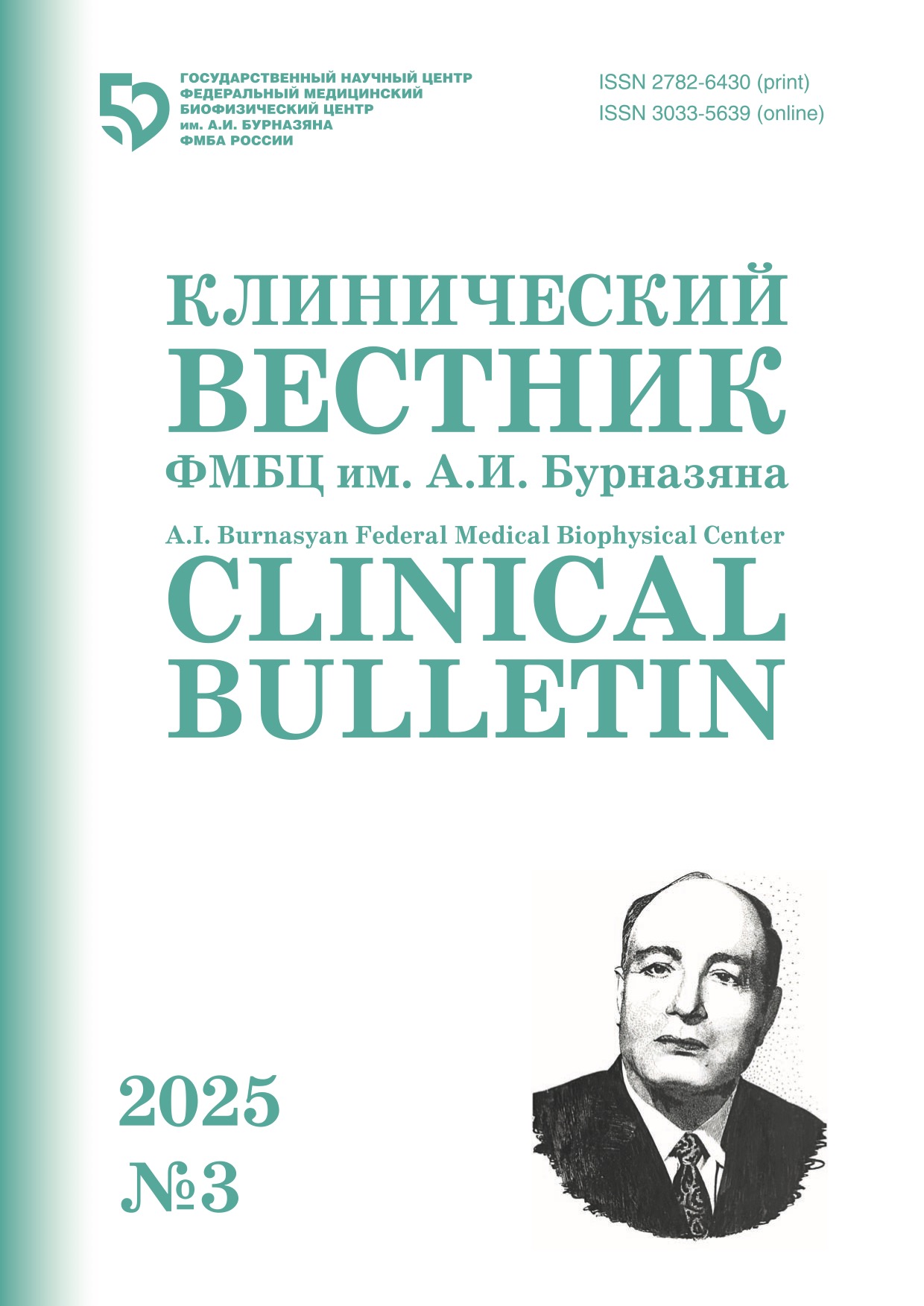A.I. Burnasyan FMBC clinical bulletin. 2023 № 1
M.A. Shestopalova, T.A. Galkina, S.V. Lischuk
Nasal Angiomyolipoma (Clinical Case)
A.I. Burnasyan Federal Medical Biophysical Center, Moscow, Russia
Contact person: Maryam Abdulmazhidovna Shestopalova: mayama05@rambler.ru
Abstract
Angiomyolipoma (AML) is a rare benign tumor originating from mesenchial tissue [1]. Most often, this tumor affects the kidneys and is 0.3–3% [1-3]. Extrarenal AML is observed very rarely (about 40 cases have been described in the literature). After the kidneys, AML is most often found in the liver, then in descending order: in the uterus, brain, vagina, penis, nasal cavity, hard palate, abdominal wall, fallopian tubes, spermatic cord, colon, retroperitoneal space. To date, 6 cases of AML of the nasal cavity have been officially registered [ ]. As a rule, they are hamartomic lesions containing smooth muscles, vascular network and mature adipose tissue. This article presents a clinical observation of a patient with such a rare pathology as AML of the nasal cavity. The use of a complex of histological and immunohistochemical diagnostic methods makes it possible to make the correct diagnosis
Keywords: angiomyolipoma; hamartoma; nasal cavity; nasal surgical proceduress
For citation: Shestopalova MA, Galkina TA, Lischuk SV. Nasal Angiomyolipoma (Clinical Case) A.I. Burnasyan Federal Medical Biophysical Center Clinical Bulletin. 2023.1:54-57. In Russian) DOI: 10.33266/2782-6430-2023-1-54-57
REFERENCES
- Fegan J.E., Shah H.R., Mukunyadzi P., et al. Extrarenal Retroperitoneal Angiomyolipoma. South Med. J. 1997;90;1:59–62.
- Oesterling J.E., Fishman E.K., Goldman S.M., Marshall F.F. The Management of Renal Angiomyolipoma. J. Urol. 1986;135:1121–1124.
- Stone C.H., Lee M.W., Amin M.B., et al. Renal Angiomyolipoma: Further Immunophenotypic Characterization of an Expanding Morphologic Spectrum. Arch. Pathol. Lab. Med. 2001;125:751–758.
- Eble J.N. Angiomyolipoma of Kidney. Semin. Diagn. Pathol. 1998;15:21.
- Perić A., Sotirović J., Folić M., Đurdević B.V. Angiomyolipoma Originating From the Nasal Vestibule: A Case Report. Ear Nose Throat J. 2021. DOI: 10.1177/01455613211036241.
- Suna Erkiliç, N Emrah Koçer, Semih Mumbuç, Muzaffer Kanlikama. Nasal Angiomyolipoma. Acta Otolaryngol. 2005;125;4:446-448.
- Pierse J.E., Stern A. Benign Cysts and Tumors of the Paranasal Sinuses. Oral and Maxillofacial Surgery Clinics of North America. 2012;24;2:249-264.
- Zakharchenko A.N. Modern Methods of Non-Invasive Diagnostics of Benign Neoplasms of the Nasal Cavity, Paranasal Sinuses and Nasopharynx. Rossiyskaya Otorinolaringologiya = Russian Otorhinolaryngology. 2001;1:51-55 (In Russ.).
- Karpishchenko S.A., Osipenko E.V. Frontoethmoidal Osteoma: Diagnosis and Surgical Treatment. Folia Otorhinolaryngologiae et Pathologiae Respiratoriae. 2014;20;4:11-13.
- Zubareva A.A. Differential Diagnosis of Diseases of the Paranasal Sinuses Using Magnetic Resonance Imaging. Rossiyskaya Otorinolaringologiya = Russian Otorhinolaryngology. 2000;3:125-130 (In Russ.).
Conflict of interest. The authors declare no conflict of interest.
Financing. The study had no sponsorship.
Contribution. Article was prepared with equal participation of the authors.
Article received: 15.12.2023. Accepted for publication: 17.01.2023


